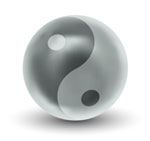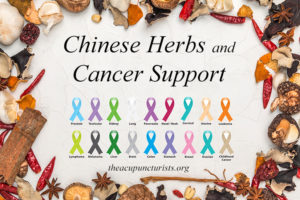The word cancer comes from a Greek word “karkinos”, describing carcinoma tumors by the physician Hippocrates (460–370 B.C). Cancers are a wide spectrum of diseases that involve abnormal cell growth with the potential to invade or spread to other parts of the body. Statistics show that more than 90 cancers are due to genetic mutations from environmental factors, and less than 10% is due to inherited genetics. Common environmental factors include lifestyle, economic and behavioral, such as tobacco, obesity, infections, stress, lack of physical activity, and pollution.
Cancer statistic
According to the National Cancer Institute:
- Last year, there were over 1,685,000 new cancer diagnoses in the United States and 595,000 cancer deaths.
- The top 10 cancers are: “breast cancer, lung & bronchus cancer, prostate cancer, colon/rectal cancer, bladder cancer, skin cancer, non-Hodgkin lymphoma, thyroid cancer, kidney and renal pelvis cancer, leukemia, and endometrial cancer.”
- Nearly 14.5 million of people are living in some form of cancer remission, and this number is continually projecting higher.
- Approximately 2 out of 5 people will be diagnosed with cancer during their lifetime.
Red flags for Cancer
Even with so many different kinds of cancer, there are several common “red flag” symptoms. Having any of the following are a reason to visit the doctor:
- Abnormal mass growth or tumor
- Unexplained weight loss
- Persistent low grade fever or pain
- Extreme fatigue
- Chronic cough with blood or sore throat
- Vaginal bleeding or blood in stool or urine
- Ulceration that will not heal or a change in a mole
Conventional Medicine in treating Cancer
Common treatments in conventional medicine for cancer are surgery, chemotherapy, radiation therapy, and targeted immunotherapy. Most of this treatment directly removes or attacks cancer cells and prevents them from further spread. The earlier cancer is detected, the better the treatment outcome will be. Although highly recommended and critically important, conventional medicine treatments usually come with wide range of side effects including but not limited to: anemia, appetite loss, bleeding or bruising, constipation, delirium, night sweats, diarrhea, edema, fatigue, hair loss, infection and neutropenia, memory or concentration problems, nausea and vomiting, pain, sexual dysfunction, and sleep disorders.
Traditional Chinese Medicine’s history of cancer treatment
In the history of Traditional Chinese medicine (TCM), tumors were first recorded on the famous “oracle bones” dating back 4000 years. Huang Di Nei Jing or The Yellow Emperor’s Canon Internal Classic was written over 1000 years ago and considered to be the Bible of Chinese medicine. It describes cancer as an “exhaustion” disease: “when the large bones of the patient are withered, his large muscles are thin and subsided; moreover, with the distension of the chest, pain in the abdomen, restless and fever all over the body… wearing down of the muscles, sinking of the eye socket; if by this time, the pulse indicating the exhaustion of the liver –energy is seen, and the patient will die later until his bodily resistance being lost”. Later, in the Ming dynasty, Dr. Zhang Jing Yue developed four methods including attack, disperse, drain, and strengthen to cure “accumulated disease,” which was the first systematic description of cancer treatment. With a long history of TCM, modern physicians in China have discovered many herbs and formulas to effectively treat cancer. Together with Western medicine, cancer patients in China are usually treated with herbal medicine to enhance a fast recovery.
Syndromes differentiation and general treatment principle of cancer in TCM
The main syndromes appearing in cancer are exhaustion of vital qi, phlegm and damp accumulation, toxic heat, spleen and kidney yang deficiency, and yin deficiency with heat.
- Exhaustion of vital qi, 正气虚
A weakened body’s anti-pathogenic capabilities (vital energy) are the basis of carcinogenesis, which makes individuals more susceptible to different carcinogenic factors. The weakness either comes from congenital (inherited) or environmental (diet, life style, pollution, etc…). The TCM treatment principle is to strengthen the anti-pathogenic qi (immune system), replenish the loss to help patient get stronger, thus preventing further spread of the cancer or recurrence of the cancer. Modern research has shown that some herbs may protect normal tissues from radiotherapy. For example, Huang Qi and Ren Shen have the ability to promote the production of lymph cells and activate the actions of T- and B- lymphocytes, hence, improving patients’ immunity and tolerance to radiation and chemo therapy.
- Blood Stasis气滞血瘀
In TCM theory, blood is the substance that nourishes body tissues and organs. When blood movement is slowed down or completely stops at some part of the body, it creates stasis, like the river that stops flowing smoothly; eventually toxic and pathogenic cells start to build up. In conventional medicine, it represents abdominal masses, cancer of colon, carcinoma of breast, or ovarian cancer. These patients generally have darker complexion or discoloration on certain body parts, a purple tongue, and purple nails. In this case, first step of treatment is removing the blockage with herbs. E Zhu and San Leng are effective herbs in helping free flow of the qi and blood. Second step is helping the formation of healthy blood with blood building herbs such as Dang Gui, Bai Shao and Shu Di Huang. Formulas like Ge Xia Zhu Yu Tang and Tao Hong Si Wu Tang are the perfect combination for both moving blood stasis and nourishing blood at the same time.
- Toxic Heat 湿热蕴毒
Toxic heat is the speedy development type of cancer. In TCM, the liver and gallbladder are the main organs that show toxic heat. When disharmony occurs in these organs, patient have a bitter taste in the mouth, fever, yellow sclera (eyes), pain under the rib cage, burning urination, foul vaginal discharge, enlarged bladder, etc… These patients tend to have liver, gallbladder, or urogenital cancers. The treatment principle is to clear toxic heat. Herbs with bitter flavors are the most effective in rapid heat clearing. For example, formula Ba Zheng San and Long Dan Xie Gan Tang contain multiple bitter herbs that target acute liver and gall bladder heat symptoms.
- Phlegm and Damp Accumulation 痰湿内盛
TCM theory states that phlegm and damp have the same origins: normal body fluids. When one’s Yang Qi (the active and warming energy) is under-functioning, phlegm and damp start to build up into masses. Typical symptoms are breast lumps, chest pain with mucus, or limb weakness and puffiness. In conventional medicine, brain tumors, breast cancer, thyroid cancer, lymphoma, and skin cancer fall into this category. In TCM, herbs with a salty flavor such as Hai Zao or Mu Li can soften the nodules. Herbs such as Gua Lou, Zao Jia, and Ban Xia are specific to down-bear phlegm in the chest region.
TCM helps patients cope before and after Conventional Treatments
As a general rule, TCM prepares patients with tonifying methods to build up vital qi (immune system), so that patients will tolerate invasive surgical procedures and recover faster. Formulas such as Si Wu Tang and Si Jun Zi Tang are good examples. For post-radiation or chemo therapy, patients’ spleen and kidney qi are greatly weakened, so we focus on the side effects such as poor appetite or nausea and vomiting with herbs such as Sheng Jiang, Mu Xiang, and Sha Ren to soothe the spleen and stomach.
Modern Research on Cancer-Specific Herbs
- Bai Hua She She Cao白花蛇舌草
The water extract of the raw herb Bai Hua She She Cao was used in vitro anti-proliferative activities of the extract were tested against eight cancer cell lines and one normal cell line. The extract had a very limited cytotoxicity on the normal cells, but Bai Hua She She Cao extract effectively inhibited the growth of all the eight cancer cell lines and induced a significant increase of apoptosis.
- Ruanjian San Jie Tang 软坚散结汤
This formula is composed of four herbs: Ban Xia, Xia Ku Cao, Shan Ci Gu, and Hai Zao. Studies indicate that the active compounds from these herbs exhibited anticancer activities such as inhibition of proliferation, invasion, metastasis, inflammation, and angiogenesis, induction of differentiation, apoptosis and cell-cycle arrest, anti-oxidation, and modulation of immune function. The versatile anti-cancer effects of these compounds are also indicated by the potency against a broad spectrum of cancer types, both various solid tumors and hematopoietic malignancies.
- Ban Zhi Lian半枝莲
An aqueous extract of the herb Ban Zhi Lian 半枝莲 was found to have “anti-proliferative gene expression responses in human breast and prostate cancer cells” by researchers at the University of California at Berkeley, Department of Molecular and Cell Biology. Researchers at the Medical School of Xi’an Jiao Tong University, Department of Oncology concluded that Ban Zhi Lian “has antitumor activity and seems to be safe and effective for the use of anti-tumor therapy.” Other research finds that Ban Zhi Lian “exhibited potential anticancer activity”.
Consult with Your Chinese Medicine Doctor to get the Appropriate Formula
Most of clinical used herbs are safe and have been used for thousands of years. Although some herbs or minerals are toxic or have predictable side effects, TCM has developed special herb-processing methods and combination rules to avoid or reduce adverse reactions. It has been reported that over 90% of adverse reactions induced by herbs are due to overdose or improper processing. A few of anti-cancer herbs or Chinese Traditional Patent Medicines have certain side effects, some it is important to use these herbs under the guidance of a licensed acupuncturist and herbalist.
Chinese medicine understands cancer to be systematic imbalance of the person. Thus, coping with cancer means life-style change is critical in the journey of recovery. Besides ongoing follow-up doctors visits, a healthy diet, Qi gong, acupuncture, and family support are all part of the long-term healing process.
Our team of acupuncture physicians use acupuncture and Traditional Chinese Herbal Medicine for cancer support, and work with patients undergoing treatment or in recovery / remission. Each herbal formula prescribed is based on a patient’s unique pattern and symptoms. Schedule a consultation with today to learn if we can help you and your specific diagnosis.
Learn more about Acupuncture’s role in Cancer Support
Sources:
- http://www.healthcmi.com/Acupuncture-Continuing-Education-News/452-anticancerherbnewresearchacupunctureceus
- https://www.ncbi.nlm.nih.gov/pmc/articles/PMC5506596/
- http://maciociaonline.blogspot.com/2014/08/the-treatment-of-cancer-with-chinese.html
- https://www.ncbi.nlm.nih.gov/pubmed/15273074
- https://www.cancer.gov/about-cancer/understanding/statistics
- http://www.shen-nong.com/eng/exam/specialties_cancermedicine.html
- 中医内科学,中国中医药出版社,2007,2. 446-455
- Pathology for the Health Professions, Fourth Edition, 77-83

